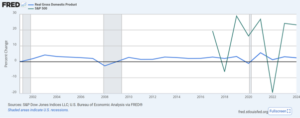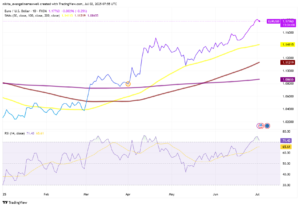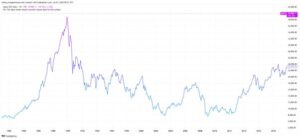Background and Recent Developments
During its December meeting, Federal Reserve Chair Jerome Powell announced a more cautious approach to interest rate cuts, sending ripples through financial markets. While some investors had anticipated policy adjustments, the Fed’s expression of uncertainty about the future path of rates sparked widespread attention and a wave of sell-offs.
This policy shift, described by some analysts as a “light pivot,” represents a gradual move from a clear easing stance to a more measured approach. It highlights the Fed’s concerns over sticky inflation and a resilient labor market.
Market Reaction and Investor Sentiment
Market Performance
- Stock Market Decline: Both the S&P 500 and Nasdaq saw declines following the announcement, as investors reacted to the reduced likelihood of aggressive rate cuts in 2025.
- Revised Market Expectations: Investors began recalibrating their expectations for future rate cuts, forecasting fewer reductions than previously anticipated.
Analyst Perspectives
Michael Kantrowitz, Chief Investment Strategist at Piper Sandler, noted that the market’s reaction was fueled by the Fed’s “hawkish tone,” which magnified fears of higher rates and persistent inflation.
On the other hand, Nicholas Colas, co-founder of DataTrek Research, argued that Powell’s comments, while disappointing, did not fundamentally alter the bullish case for markets. He emphasized that fewer rate cuts reflect ongoing economic growth, which remains a positive backdrop for equities.
Key Drivers Behind the Fed’s Shift
Inflation Concerns
While recent data suggests some easing in inflation, core inflation remains above the Fed’s 2% target. This has compelled the Fed to tread cautiously, aiming to avoid a premature loosening of policy that could reignite inflationary pressures.
Strong Labor Market
The resilience of the labor market is another critical factor. Low unemployment levels have sustained economic stability but also pose risks of wage-driven inflation, prompting the Fed to maintain a vigilant stance.
Policy Divergence
Diverging opinions within the Federal Open Market Committee (FOMC) reflect the complexities of the current economic environment. Some members have argued against rapid rate reductions, adding to uncertainty over the Fed’s next steps.
Outlook and Market Opportunities
-
Equities
Despite recent volatility, the ongoing economic growth could provide support for equities in the long term. Investors should closely monitor inflation trends and economic fundamentals to adjust their strategies accordingly. -
Bonds
A slower pace of rate cuts may lead to higher bond yields, presenting challenges for fixed-income investors. Understanding these dynamics will be crucial for portfolio adjustments. -
Forex
The Fed’s cautious approach could strengthen the U.S. dollar, particularly against currencies from economies pursuing more accommodative policies. This creates new opportunities for forex traders.
Conclusion
The Fed’s pivot signals a shift toward balancing monetary easing with the need to manage inflation risks. This cautious stance underscores the complexities of navigating an economy marked by resilient growth and persistent inflation.
For forex and equity investors, understanding this shift and closely monitoring economic data will be essential for seizing market opportunities. In an environment of heightened uncertainty, staying flexible and informed will be key to navigating potential volatility.
Key Takeaway: The Fed’s “light pivot” highlights policy uncertainty, making it critical for investors to focus on inflation and economic indicators to adjust their strategies effectively.





